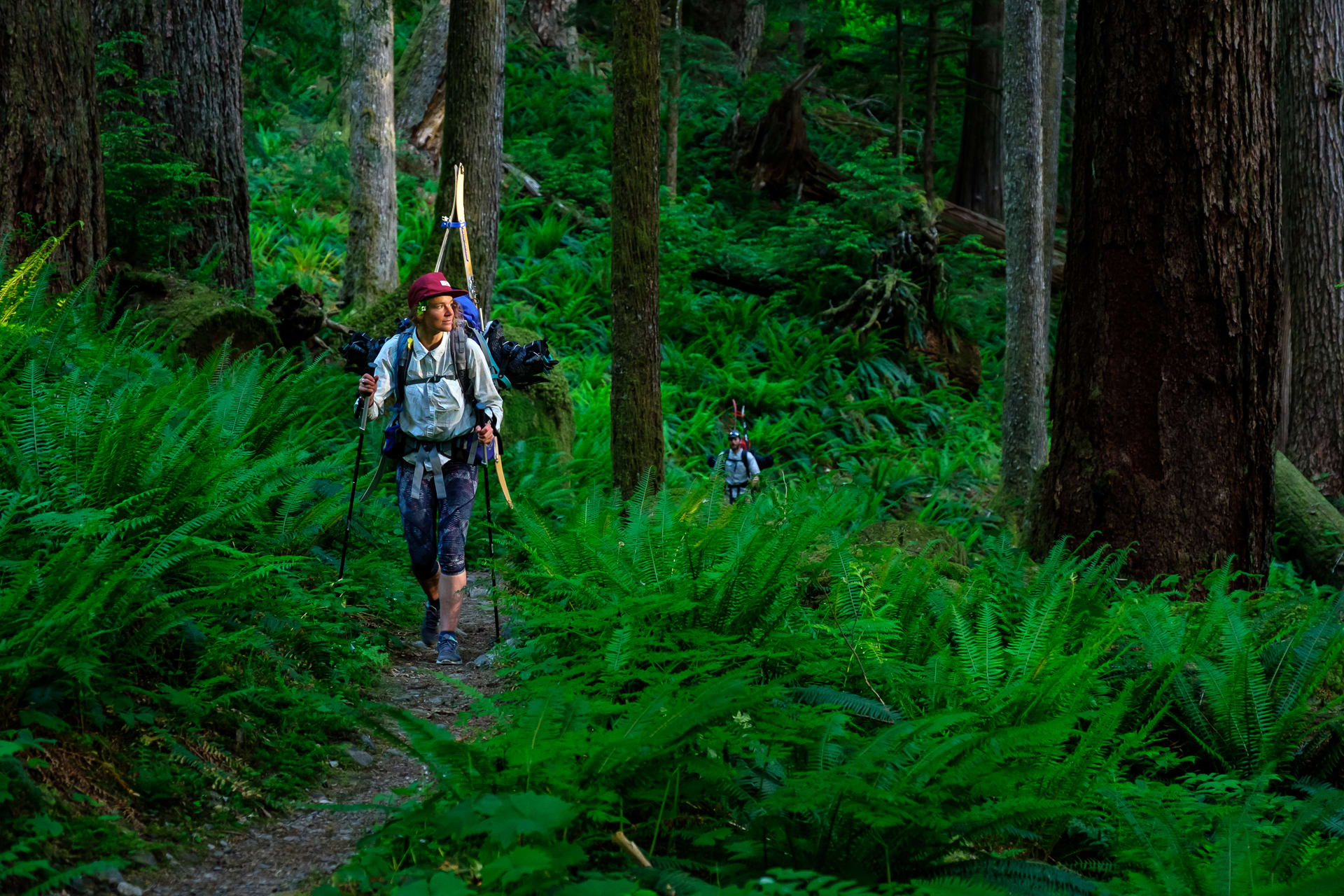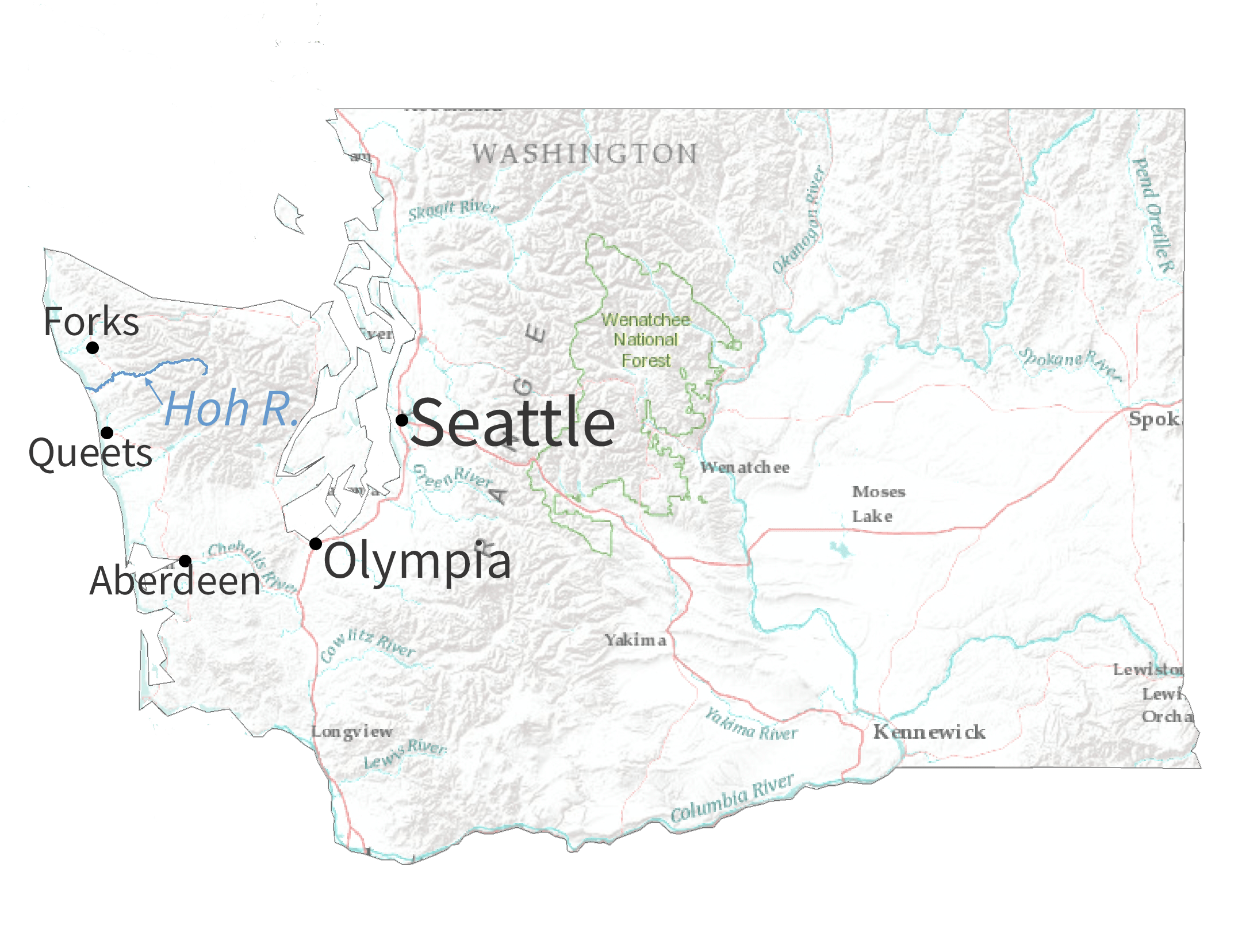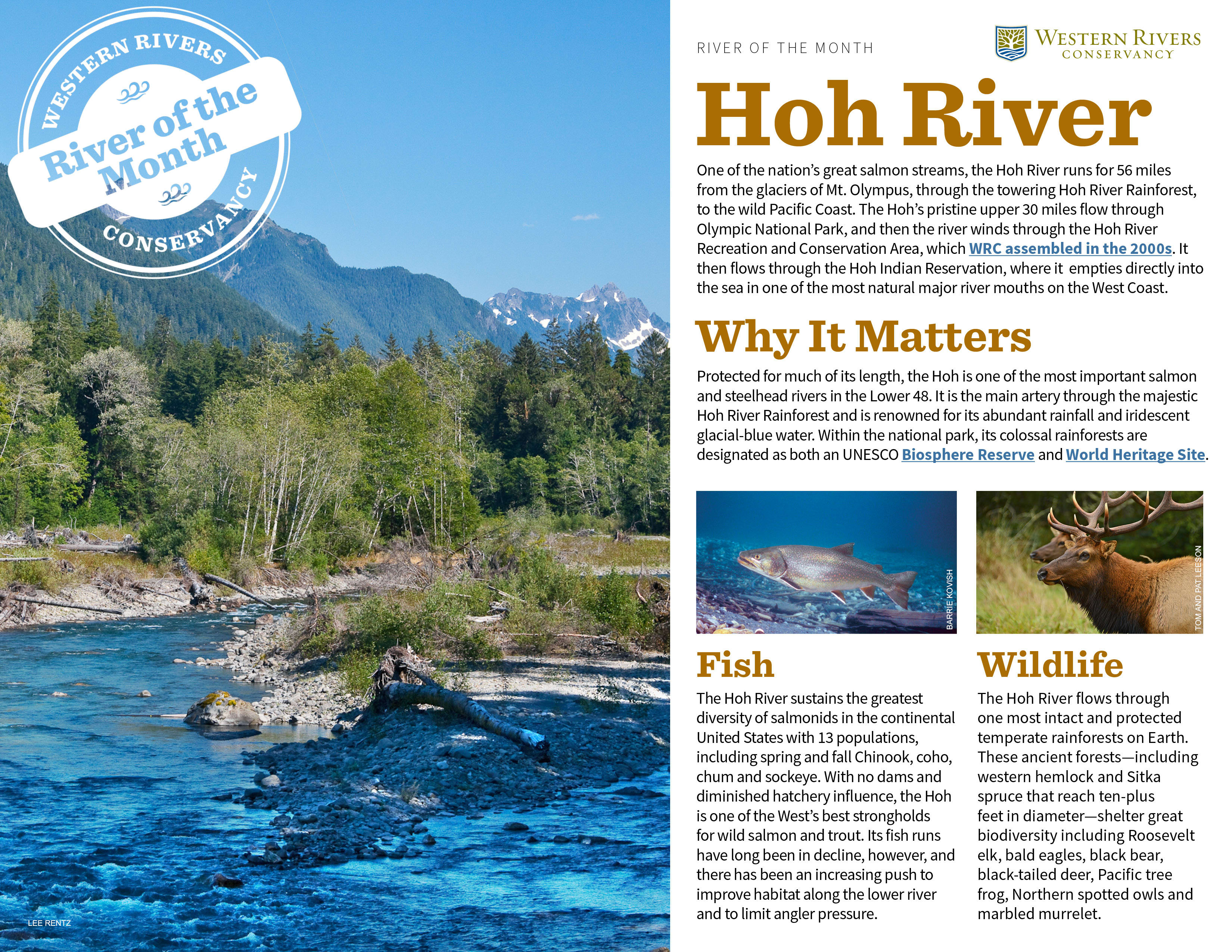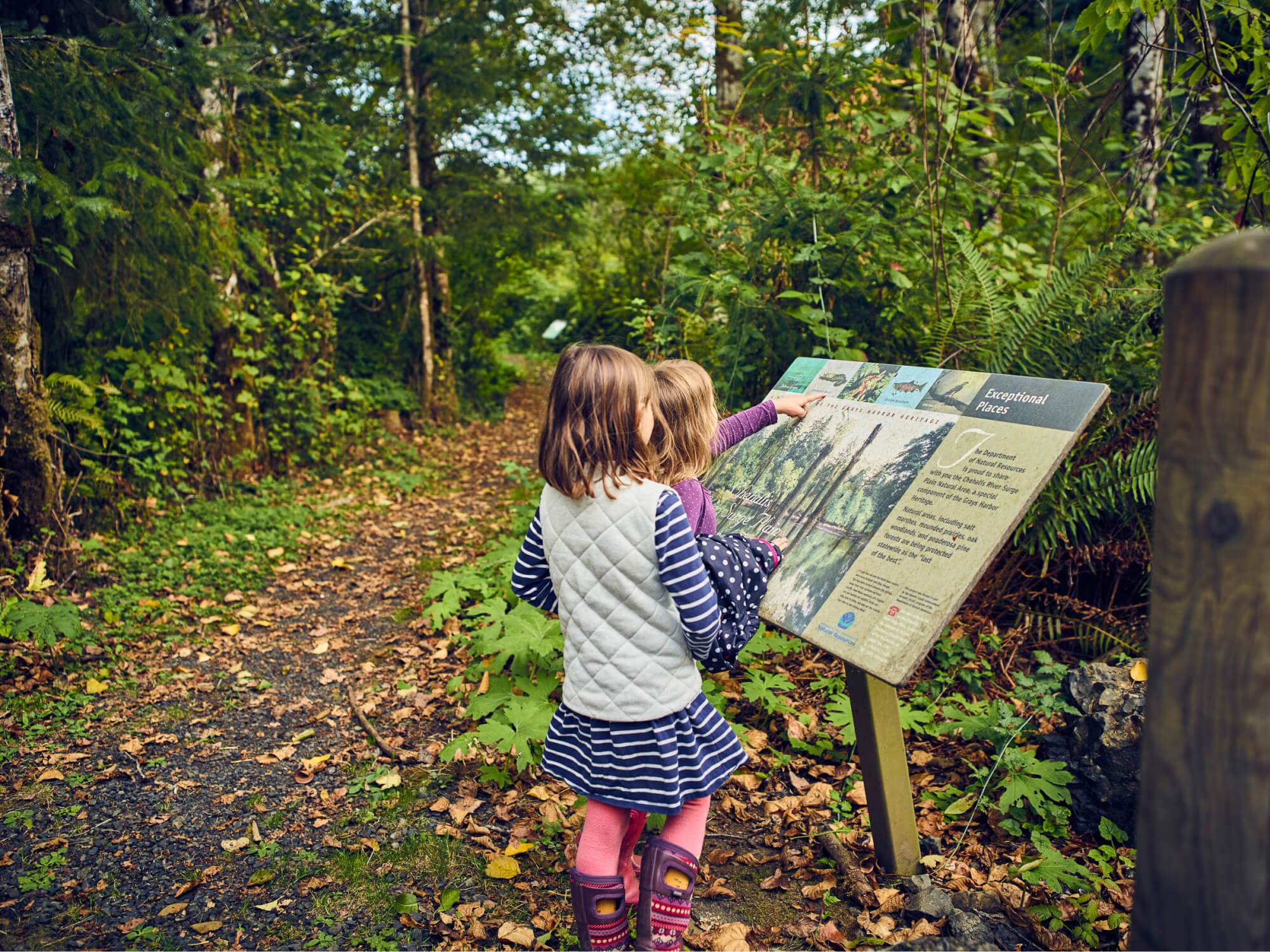
Fish
The Hoh River sustains the greatest diversity of salmonids in the continental United States with 13 populations, including spring and fall Chinook, coho, chum and sockeye. With no dams and diminished hatchery influence, the Hoh is one of the West’s best strongholds for wild salmon and trout. Its fish runs have long been in decline, however, and there has been an increasing push to improve habitat along the lower river and to limit angler pressure.

Wildlife
The Hoh River flows through one of the most intact and protected temperate rainforests on Earth. These ancient forests—including western hemlock and Sitka spruce that reach 10-plus feet in diameter—shelter great biodiversity including Roosevelt elk, bald eagle, black bear, black-tailed deer, Pacific tree frog, Northern spotted owl and marbled murrelet.

-
Hike
From the Hoh Rainforest Visitor Center you can access two easy rainforest loops, the Hall of Mosses and the Spruce Nature Trail, as well as the popular Hoh River Trail, which traces the river for 18 miles to the shoulder of Mt. Olympus at 3,700 feet. The South Fork Hoh River Trail offers a day hike in Olympic National Park with more solitude. You can also comb the beach at the river’s mouth on the Oil City Trail.
-
Fish
Fishing is currently closed. The Hoh receives immense angling pressure, and with precious few fish in the river, local guides, agencies and fly shops have begun to explore ways to limit angler impact on fish. When the river is open, barbless hooks are required, wild steelhead are catch-and-release, and some guides even advocate for swung flies only, decreasing the odds of hooking a fish. Always check regulations.
-
Camp
Wake up in a misty rainforest at a handful of campsites on state lands, like Hoh Oxbows and the primitive South Fork Hoh Campground, or within the national park at Hoh Campground. Most sites are first-come, first-served. Another great launch point is Kalaloch, which has a beachfront lodge and reservation campground within the park’s coastal unit.
The WRC Story
To ensure the Hoh River was permanently protected from source to sea, Western Rivers Conservancy undertook a nine-year initiative to purchase nearly all industrial forest lands along the lower river corridor, which were then managed primarily as a tree farm. Piece by piece, we purchased nearly 7,000 acres along 30 miles of the river. We then partnered with Wild Salmon Center to create the Hoh River Trust to manage the new Hoh River Recreation and Conservation Area for the sake of fish, wildlife and people. In 2017, we worked with the trust to transfer the lands to The Nature Conservancy, ensuring they remain protected and open, free of charge, for the public to hike, fish, hunt, boat and otherwise enjoy. With the upper river protected within Olympic National Park, nearly the entire length of the Hoh River is now conserved—a critical gain for a globally significant stronghold for salmon, steelhead and wildlife.


Best Time of Year
- Hiking
- May-Oct
- Salmon fishing
- May-Nov
- Steelhead fishing
- Jan-Mar
- Boating
- Year-round
Go Deeper
-
Saving One River: Hoh Steelhead in Decline
(Patagonia)
Learn More -
Hoh Rainforest Visitors Guide
(Olympic National Park)
Learn More -
Large-scale restoration and renewal for 30 miles of Hoh River
(Peninsula Daily News)
Learn More -
Hoh River Rainforest Backpack
(I Heart Pacific Northwest)
Learn More


